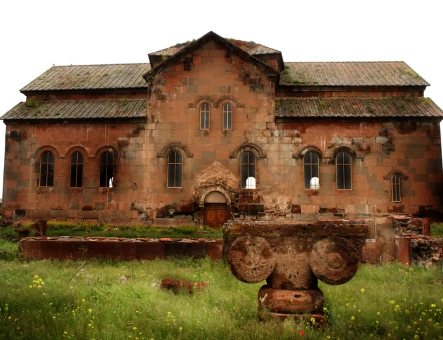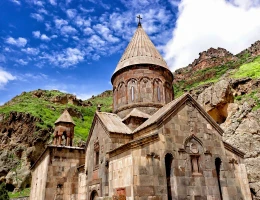Private tour: Aruch Cathedral, Marmashen, Gyumri, Urban Life (Dzitoghtsyan) Museum, Harichavank
Aruch Cathedral, Marmashen Monastery, Gyumri, Gyumri Urban Life (Dzitoghtsyan) Museum, Harichavank Monastery
1. Aruch Cathedral
20-30 min






















2. Marmashen Monastery
30-40 min




















3. Gyumri
90-110 min






































4. Gyumri Urban Life (Dzitoghtsyan) Museum
50-60 min


























5. Harichavank Monastery
20-30 min














Inclusions
-
Professional drivers
-
Air-conditioned vehicles
-
Bottled water
-
Free pick-up & drop-off within Yerevan
-
Vehicle & passengers insurance
-
Extra stops on the route upon request
Exclusions
-
Significant deviations from the route
-
Alcoholic beverages if lunch option selected
-
Audio guides
-
Wi-Fi in the vehicles
What to expect
- Experience 7th century medieval stories
- Admire the beauty and grandeur of 11th century architecture
- Take a walk in the old streets of Gyumri, where the famous Armenian films were shot
- Observe the summer residence of 19th century Armenian Catholicos
Booking conditions
Cancellation & modification
Meet our Guides

Anahit Ghazaryan
My name is Anahit Ghazaryan, and since 2015 I have been in a state of love! I am in love with Armenia, and I always want to talk about it! Come visit! I guarantee it will be beautiful, easy, delicious, and fun! Let's discover Armenia together, enjoy it, and fall in love! I don't like legends and tell them only when absolutely necessary, and only those that feature real historical figures! Since I was born in the middle of the last century, I talk about some events not as a historian, but as a witness!

Armine Julhakyan
Hello! I'm Armine, your guide in Armenia. With me, you'll discover not only the famous landmarks but also the hidden gems of my country.

Arpine Khalatyan
My name is Arpi. With experience in guiding since 2015, fluency in English and Russian, and a wealth of knowledge in history and culture, I offer engaging and informative tours during which you'll explore Armenia and feel the greatest vibes ever.

Davit Hasratyan
I'm Davit, a history teacher, amateur actor, and since 2010, a guide at "Hyur Service"! I love my country and strive to make every tour I conduct leave an unforgettable impression on our guests, making them want to come back again and again!



